
The Battle of Lostwithiel took place over a 13-day period from 21 August to 2 September 1644, around the town of Lostwithiel and along the River Fowey valley in Cornwall during the First English Civil War. A Royalist army led by Charles I of England defeated a Parliamentarian force commanded by the Earl of Essex.

The Battle of Edgehill was a pitched battle of the First English Civil War. It was fought near Edge Hill and Kineton in southern Warwickshire on Sunday, 23 October 1642.

Stafford Castle is an ancient Grade II listed castle situated two miles west of the town of Stafford in Staffordshire, England. From the time of the Norman Conquest and as recorded in the Domesday Book of 1086 it was the seat of the powerful Anglo-Norman Stafford family, feudal barons of Stafford, later Barons Stafford (1299) by writ, Earls of Stafford (1351) and Dukes of Buckingham (1444). The 14th-century stone keep was demolished in 1643, during the Civil War, having been held for the Royalists by Lady Isabel Stafford. The castle was remodeled in the early 19th century by the Jerningham family in the Gothic Revival style, on the foundations of the medieval structure, and incorporates much of the original stonework. Today the A518 Stafford-to-Newport Road passes next to it and it is a prominent local landmark visible from the M6 motorway and from the West Coast inter-city mainline.
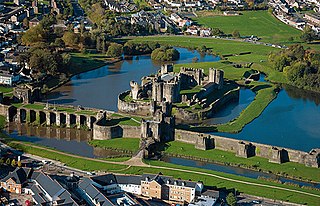
Caerphilly Castle is a medieval fortification in Caerphilly in South Wales. The castle was constructed by Gilbert de Clare in the 13th century as part of his campaign to maintain control of Glamorgan, and saw extensive fighting between Gilbert, his descendants, and the native Welsh rulers. Surrounded by extensive artificial lakes – considered by historian Allen Brown to be "the most elaborate water defences in all Britain" – it occupies around 30 acres (12 ha) and is the largest castle in Wales and the second-largest castle in the United Kingdom after Windsor Castle. It is famous for having introduced concentric castle defences to Britain and for its large gatehouses. Gilbert began work on the castle in 1268 following his occupation of the north of Glamorgan, with the majority of the construction occurring over the next three years at a considerable cost. The project was opposed by Gilbert's Welsh rival Llywelyn ap Gruffudd, leading to the site being burnt in 1270 and taken over by royal officials in 1271. Despite these interruptions, Gilbert successfully completed the castle and took control of the region. The core of Caerphilly Castle, including the castle's luxurious accommodation, was built on what became a central island, surrounding by several artificial lakes, a design Gilbert probably derived from that at Kenilworth. The dams for these lakes were further fortified, and an island to the west provided additional protection. The concentric rings of walls inspired Edward I's castles in North Wales, and proved what historian Norman Pounds has termed "a turning point in the history of the castle in Britain".
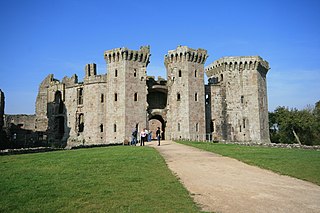
Raglan Castle is a late medieval castle located just north of the village of Raglan in the county of Monmouthshire in south east Wales. The modern castle dates from between the 15th and early 17th centuries, when the successive ruling families of the Herberts and the Somersets created a luxurious, fortified castle, complete with a large hexagonal keep, known as the Great Tower or the Yellow Tower of Gwent. Surrounded by parkland, water gardens and terraces, the castle was considered by contemporaries to be the equal of any other in England or Wales.

Finmere is a village and civil parish in Oxfordshire, south of the River Great Ouse. It is on the county boundary with Buckinghamshire, almost 4 miles (6 km) west of Buckingham and just over 4 miles (6 km) east of Brackley in Northamptonshire. The 2011 Census recorded the parish's population as 466.

The Sack of Wexford took place from 2 to 11 October 1649, during the campaign known as the Cromwellian conquest of Ireland. It was part of the wider 1641 to 1653 Irish Confederate Wars, and an associated conflict of the Wars of the Three Kingdoms.

The Battle of Powick Bridge was a skirmish fought on 23 September 1642 just south of Worcester, England, during the First English Civil War. It was the first engagement between elements of the principal field armies of the Royalists and Parliamentarians. Sir John Byron was escorting a Royalist convoy of valuables from Oxford to King Charles's army in Shrewsbury and, worried about the proximity of the Parliamentarians, took refuge in Worcester on 16 September to await reinforcements. The Royalists despatched a force commanded by Prince Rupert. Meanwhile, the Parliamentarians sent a detachment, under Colonel John Brown, to try to capture the convoy. Each force consisted of around 1,000 mounted troops, a mix of cavalry and dragoons.

Broughton Castle is a medieval fortified manor house in the village of Broughton which is about two miles south-west of Banbury, Oxfordshire, England on the B4035 road. It is the home of the Fiennes family, Barons Saye and Sele. The castle sits on an artificial island in pastureland and is surrounded by a wide moat. Across the small bridge lies the parish church of St Mary the Virgin, surrounded by its historic cemetery. A Grade I listed building, it opens to the public over the summer.

Bowes Castle is a medieval castle in the village of Bowes in County Durham, England. Built within the perimeter of the former Roman fort of Lavatrae, on the Roman road that is now the A66, the early timber castle on the site was replaced by a more substantial stone structure between 1170 and 1174 on the orders of Henry II. A planned village was built alongside the castle. Bowes Castle withstood Scottish attack during the Great Revolt of 1173–74 but was successfully looted by rebels in 1322. The castle went into decline and was largely dismantled after the English Civil War. The ruins are now owned by English Heritage and run as a tourist attraction. There is free admission during daylight hours.

The Castles and Town Walls of King Edward in Gwynedd is a UNESCO-designated World Heritage Site located in Gwynedd, Wales. It includes the castles of Beaumaris and Harlech and the castles and town walls of Caernarfon and Conwy. UNESCO considers the sites to be the "finest examples of late 13th century and early 14th century military architecture in Europe".
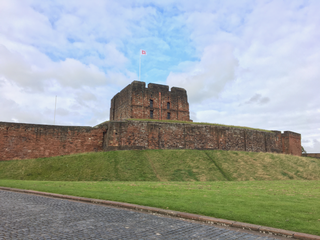
The siege of Carlisle occurred during the First English Civil War when the allied forces of the Scottish Covenanters and the English Parliamentarians besieged Carlisle Castle which was held at the time by the English Royalist forces loyal to King Charles I. The siege took place in Carlisle, Cumbria from October 1644 to 25 June 1645.

The Siege of Gloucester took place between 10 August and 5 September 1643 during the First English Civil War. It was part of a Royalist campaign led by King Charles I to take control of the Severn Valley from the Parliamentarians. Following the costly storming of Bristol on 26 July, Charles invested Gloucester in the hope that a show of force would prompt it to surrender quickly and without bloodshed. When the city, under the governorship of Lieutenant-Colonel Edward Massey, refused, the Royalists attempted to bombard it into submission. Massey adopted an aggressive defence, and the Royalist positions outside the city were regularly disrupted by Parliamentarian raids. The Royalist artillery proved inadequate for the task of siege work and, faced with a shortage of ammunition, the besiegers attempted to breach the city walls by mining. With Royalist miners about to reach the city's east gate and the defenders critically low on gunpowder, a Parliamentarian army led by the Earl of Essex arrived and forced Charles to lift the siege.

Taunton Castle is a castle built to defend the town of Taunton, Somerset, England. It has origins in the Anglo Saxon period and was later the site of a priory. The Normans then built a stone structured castle, which belonged to the Bishops of Winchester. The current heavily reconstructed buildings are the inner ward, which now houses the Museum of Somerset and the Somerset Military Museum. The building was designated a grade I listed building in 1952.

Cornwall played a significant role in the English Civil War, being a Royalist enclave in the generally Parliamentarian south-west.

Corfe Castle is a fortification standing above the village of the same name on the Isle of Purbeck peninsula in the English county of Dorset. Built by William the Conqueror, the castle dates to the 11th century and commands a gap in the Purbeck Hills on the route between Wareham and Swanage. The first phase was one of the earliest castles in England to be built at least partly using stone when the majority were built with earth and timber. Corfe Castle underwent major structural changes in the 12th and 13th centuries.
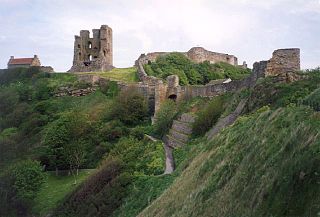
The Great Siege of Scarborough Castle was a major conflict for control of one of England's most important stone fortresses during the First English Civil War fought between the Parliamentarians and the Royalists loyal to King Charles I. In February 1645, Parliamentarians laid siege to Scarborough Castle. For five months, they bombarded it, destroying most of the keep, and engaged in bloody fighting before the defenders finally surrendered.

During the English Civil War (1642–1651), Bristol was a key port on the west coast of England and considered strategically important by both Royalists and Parliamentarians. Initially, the leadership of Bristol wanted to keep the city neutral in the conflict. In 1642, city officials implored Thomas Essex not to occupy the city with his Parliamentarian forces. The city was weakly defended, and Essex entered without much resistance. During the conflict, Bristol was used as a receiving point for the Royalists to accept reinforcements from Ireland. The town was well fortified by the Frome and Avon rivers, as well as a medieval castle, which had been bought by the corporation when the First English Civil War broke out in 1642, and during the Parliamentary defense, earthen artillery forts.
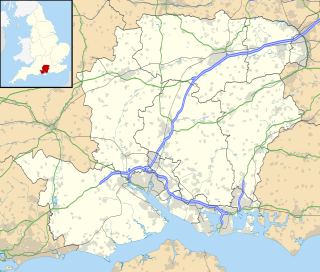
The siege of Portsmouth was the siege of a Royalist garrison in Portsmouth by a Parliamentarian force conducted in the early part of the First English Civil War. The siege resulted in Portsmouth falling to Parliament after a little under a month of conflict.

Wardour Castle in Wiltshire was besieged twice during the First English Civil War; once in May 1643, and then again between November 1643 and March 1644. During the first siege, a Parliamentarian force of around 1,300 men led by Sir Edward Hungerford attacked the castle, which was the home of Thomas Arundell, 2nd Baron Arundell of Wardour, a prominent Catholic and Royalist. Arundell was absent, fighting for King Charles at the time of the attack, and the defence was led by his wife, Lady Blanche Arundell, in command of 25 soldiers. The siege was started on 2 May, and lasted for a week before the Parliamentarians forced Lady Arundell to surrender on 8 May. The Parliamentarians garrisoned the castle with 75 men, led by Colonel Edmund Ludlow.





















